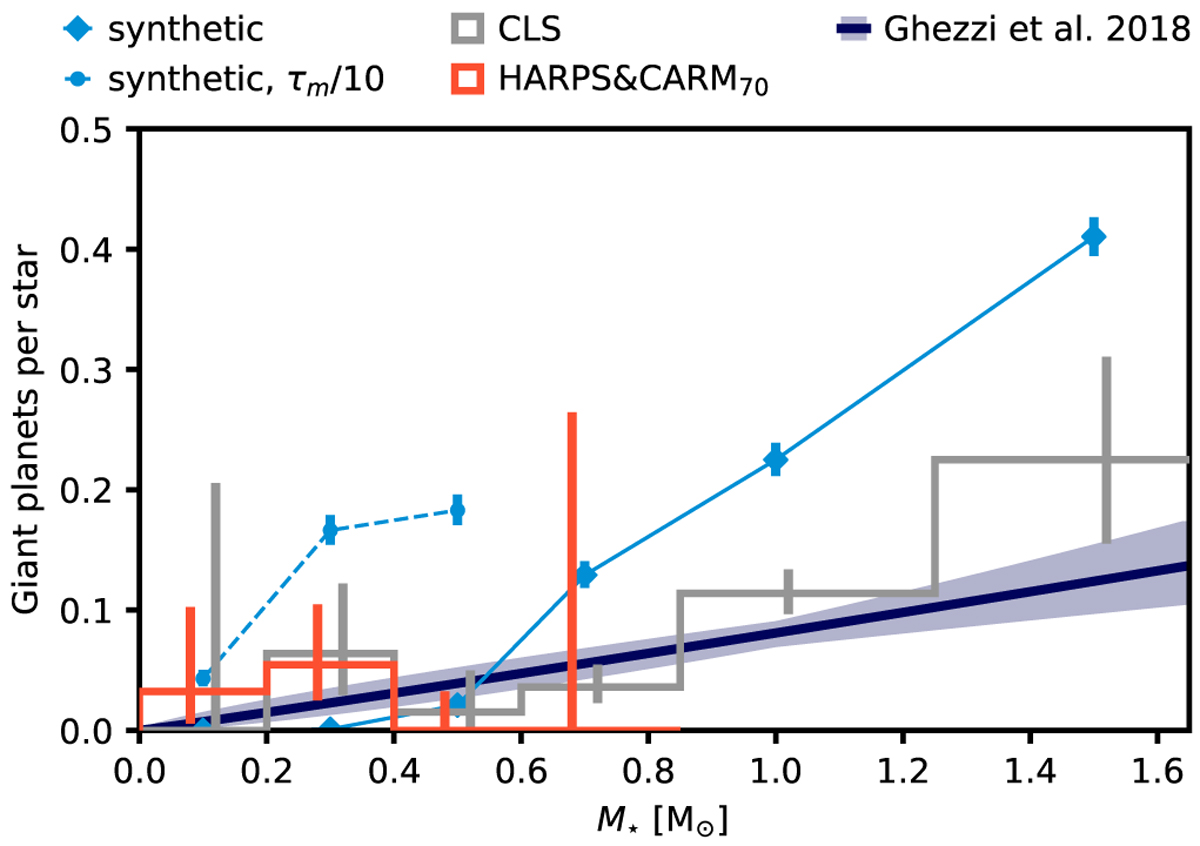Fig. 8

Download original image
Giant planet detections as a function of stellar mass. From the HARPS and CARMENES planets presented here (red), the California Legacy Survey (Rosenthal et al. 2021, gray), and our synthetic NGM planets (blue), we include detections with RV semi-amplitude K > 10 m s−1, M sin(i) > 100 M⊙, and P < 1000 d. We removed planets around close spectroscopic binaries (P < 20 yr) reported in Rosenthal et al. (2021). In addition, we show the fit of Ghezzi et al. (2018) for metallicities consistent with the assumptions made to draw the synthetic planets. Shaded areas and vertical lines denote 68% confidence intervals, respectively. We note that the HARPS &CARM70 sample is limited to M dwarfs ≲0.7 M⊙. The observed giant planets around very low-mass stars indicate a possible break of the monotonie stellar mass trend at around ~0.5 M⊙, which theoretical predictions fail to reproduce. If type-I migration is inhibited by a factor ×10 in the simulations (dashed blue line), giant planets occur also in systems with lower stellar masses.
Current usage metrics show cumulative count of Article Views (full-text article views including HTML views, PDF and ePub downloads, according to the available data) and Abstracts Views on Vision4Press platform.
Data correspond to usage on the plateform after 2015. The current usage metrics is available 48-96 hours after online publication and is updated daily on week days.
Initial download of the metrics may take a while.


